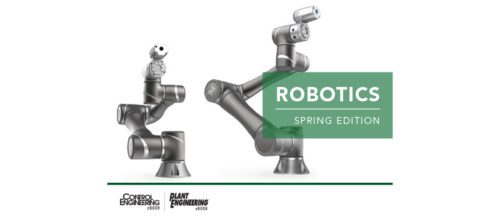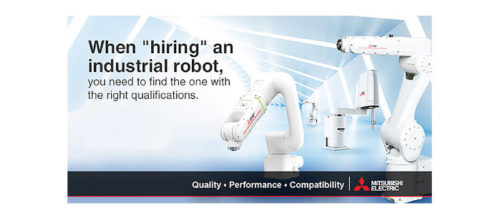Core principles of collaborative robots
Robotic design: Built-in collaborative force/torque sensing, safety features, and improved precision enable faster integration in a wider range of future-proofed applications.
Fast set-up, easy programming, flexible deployment, and safe operation are the four core principles that define collaborative robots. A lot of people mistake collaborative robot design as only being about safety; that’s just the cost of entry.
Upgrading the collaborative robot’s internal features has strengthened each of those four core principles. Built-in force torque sensing, safety features, and improved precision enable faster integration in a wider range of future-proofed applications. Increased repeatability makes collaborative robots suitable for precise finishing, assembly, and electronics tasks.
Built-in force torque sensors
A collaborative robot with built-in force torque sensors enables force torque applications out-of-the-box and makes teaching the robots easier.
In a polishing application using the same polishing tool a human would hold, a collaborative robot can use the manual tool. In a separate demonstration, a gripper moves down until it feels a small resistance. Then it opens and grips a part. There’s no need for an external sensor to sense contact with built-in force torque sensors.
Human-machine collaboration
Manufacturing needs to consider the human value and safety, craftsmanship, and the understanding of the consumers, materials, and processes. Those are core parts of a factory’s value creation. It’s not just robots that create this value; humans working with the robots also create more value for a company.
Trends such as mass personalization involve using technology to return human value improve manufacturing. Collaborative robots are what companies need to produce the personalized products consumers demand.
Far from fenced-off industrial robots that replace human workers with automated processes, collaborative robots enhance human craftsmanship with the speed, accuracy, and precision required to make modern products. Collaborative robots bring the human touch to the masses.
Jürgen Von Hollen is president of Universal Robots. Edited by Mark T. Hoske, content manager, Control Engineering, CFE Media, mhoske@cfemedia.com.
KEYWORDS: Collaborative robot, force/torque sensing
Collaborative robots are easier to integrate with built-in force and torque sensing.
Humans and robots can work collaboratively in manufacturing applications.
Collaborative robots can enhance human craftsmanship with the speed, accuracy, and precision.
CONSIDER THIS
How could collaborative robots help humans in your manufacturing applications?
ONLINE EXTRA
Universal Robots provides more information about e-Series line of collaborative robots.
See related New Products for Engineers at www.controleng.com/NP4E
Do you have experience and expertise with the topics mentioned in this content? You should consider contributing to our CFE Media editorial team and getting the recognition you and your company deserve. Click here to start this process.



